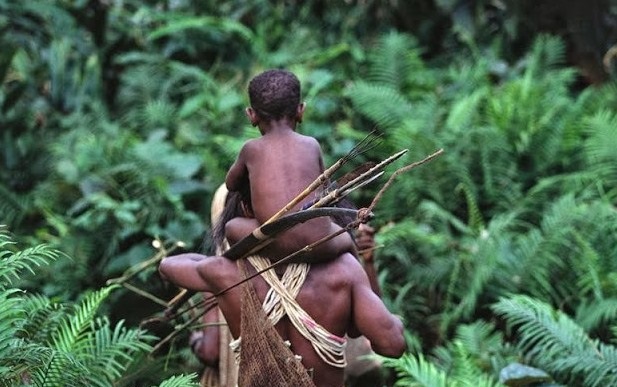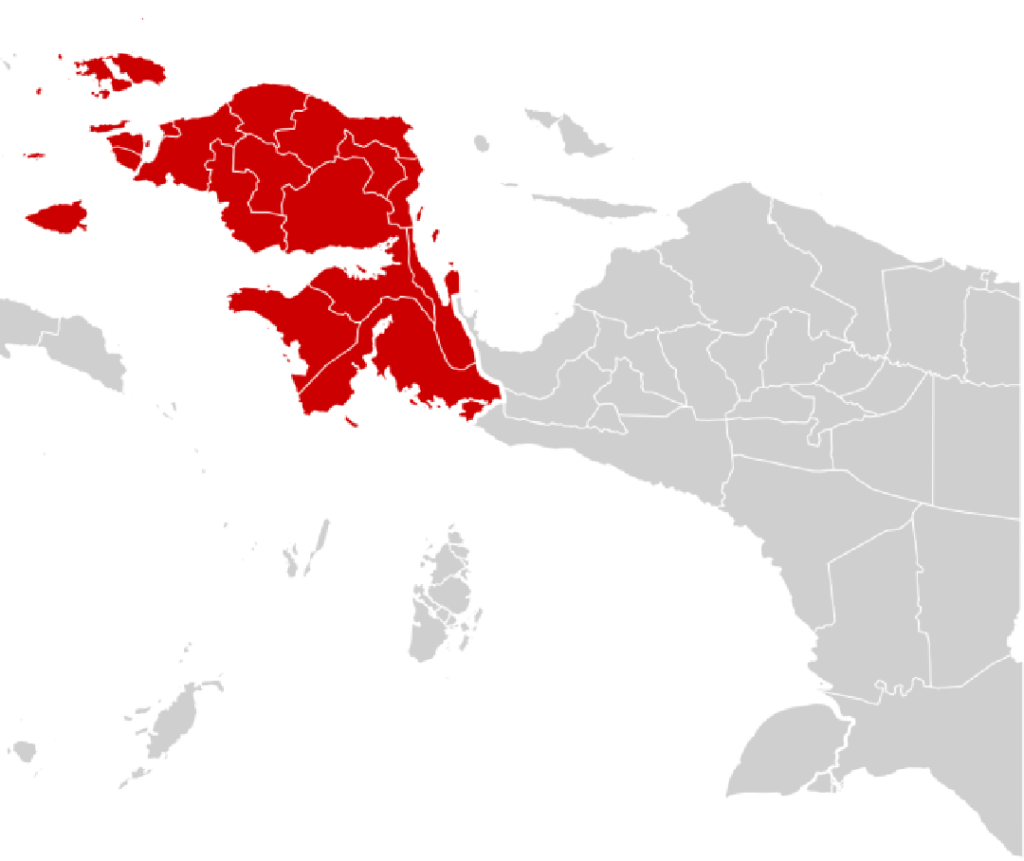In the easternmost reaches of Indonesia, far from the bustle of Java’s cities and the industrial pulse of Sumatra, lies a landscape unlike any other. Towering mountains rise like natural fortresses, wrapped in dense green cloaks of tropical forest. Rivers tumble through valleys, sustaining life in villages that still practice traditions passed down through generations. This is Papua Pegunungan, a province carved out of Papua’s highlands, and today it is becoming known not just for its cultural richness but also for its bold commitment to protecting the environment.
At a time when climate change, deforestation, and unsustainable land use threaten forests worldwide, the provincial government of Papua Pegunungan has chosen a different path. In 2025, local leaders announced a sweeping program of conservation: the formal designation of 27 protected forest areas, or kawasan hutan lindung, across eight regencies. Alongside that, the government issued eight legal decrees to establish local forest management units, known as Kesatuan Pengelolaan Hutan (KPH).
Together, these measures represent a watershed moment in Indonesia’s eastern frontier—a story not of destruction, but of protection, resilience, and vision.
Drawing the Map of Protection on 27 Forest Areas
The heart of Papua Pegunungan beats within its forests. For centuries, these highland woodlands have been the source of food, medicine, water, and spiritual connection for the region’s Indigenous peoples. Recognizing their immense ecological and cultural value, the provincial government moved decisively in 2025 to classify 27 distinct areas as protected forests.
The protection extends across all eight regencies of the province: Jayawijaya, Lanny Jaya, Yalimo, Pegunungan Bintang, Tolikara, Nduga, Yahukimo, and Mamberamo Tengah. Each of these regencies is home to unique ecological corridors—mountain ridges where cloud forests harbor rare birds or valleys where rivers serve as lifelines for agriculture and fisheries.
In Yalimo Regency, for instance, one of the declared protected zones lies upstream of Elemin and along the Lanny River basin, in an area locals call Kubligi. This is not just a forest but also a water source, regulating flows that sustain rice fields, gardens, and households downstream. By protecting places like Kubligi, the government is safeguarding both biodiversity and food security.
The head of Papua Pegunungan’s Department of Environment, Forestry, and Land Affairs (DLHKP), Rumbin Yulahap, emphasized the importance of community cooperation. “We hope people will not carry out activities inside these protected areas,” he said, noting that conservation success depends on both government oversight and grassroots awareness. He also urged regency administrations to support the province in ensuring that protection is not just a label on paper but a lived reality.
Beyond Boundaries: The Eight KPH Decrees
Declaring forests as protected is only the first step. Effective management requires institutions, people, and rules. That is why, in parallel with the designation of 27 conservation zones, the Papua Pegunungan government issued eight official decrees creating KPH units in each regency.
These KPHs are not symbolic offices. They are boots on the ground: small but dedicated teams of three to four personnel tasked with day-to-day management of forests. Their responsibilities range from rehabilitating degraded areas and preventing forest fires to mapping resources, engaging with local communities, and facilitating social forestry programs.
The KPHs are designed to serve as the backbone of sustainable forestry in Papua Pegunungan. They will be the link between government policy and the daily realities of people who live near or within forested areas. Importantly, their work is not limited to policing or prohibiting activities—it also includes helping villagers develop community-based enterprises that align with conservation, such as ecotourism, honey harvesting, or cultivation of non-timber forest products.
Though budgets remain modest, the issuance of these decrees was strategic. As Yulahap explained, “We can look for funds later from the Ministry of Forestry. What matters now is that the SKs [decrees] exist so that KPH officers can immediately begin their mission.”
The provincial legislature, DPR Papua Pegunungan, has already given its approval, and the next step is a governor regulation to provide even stronger legal backing for KPH operations. This layered approach—legal decree, legislative approval, governor’s regulation—illustrates the province’s seriousness about institutionalizing forest protection.
The Human Dimension: Communities as Stewards
While maps and decrees are essential, the real guardians of Papua Pegunungan’s forests are its people. For generations, Indigenous Papuans have relied on customary land systems to regulate hunting, farming, and forest use. These traditions often align with conservation principles, emphasizing respect for sacred sites, seasonal cycles, and communal decision-making.
The provincial government’s strategy reflects this reality. By embedding social forestry programs into the KPH mandate, the authorities acknowledge that conservation cannot succeed without local buy-in. Villagers are not outsiders to the forest—they are its residents, its users, and often its most passionate defenders.
For example, in Yahukimo Regency, villagers have begun mapping their customary territories to ensure clarity in boundaries and rights. In Pegunungan Bintang, communities are experimenting with small-scale ecotourism, inviting visitors to experience birdwatching or traditional weaving. These efforts, when supported by provincial policy, create a powerful synergy: conservation that benefits both nature and people.
Challenges on the Horizon
Despite the optimism, Papua Pegunungan’s path is not without obstacles. The province faces:
- Limited funding: Each KPH team is small, with just a handful of staff. Expanding their reach across vast and rugged terrain will require significant investment.
- Geographic barriers: Mountainous landscapes, lack of road access, and remote villages make coordination logistically difficult.
- Threats from illegal activities: Logging, land clearing for agriculture, and potential mining interests loom as risks.
- Need for broader awareness: Many residents still depend on shifting cultivation or hunting, which can unintentionally overlap with conservation zones.
Yet, by prioritizing governance first—legal recognition, institutional setup, and local engagement—the province is building a framework that can attract outside support. National ministries, NGOs, and even international donors may find in Papua Pegunungan a credible partner for conservation investment.
Why It Matters Beyond Papua
The significance of Papua Pegunungan’s initiative stretches far beyond its provincial borders. Indonesia, home to the third-largest tropical forest area in the world, plays a pivotal role in global climate stability. Protecting forests in the highlands of Papua is not only about local rivers or bird species—it is about carbon storage, biodiversity corridors, and the health of the planet.
Moreover, the province’s approach provides a model for other regions. Too often, conservation fails because it lacks legal clarity or community involvement. Papua Pegunungan is tackling both, creating a system that is legally sound, community-oriented, and adaptable to its unique context.
A Vision for the Future
Looking ahead, Papua Pegunungan envisions a province where forests remain standing, rivers continue to flow clean, and future generations inherit not degradation but abundance. To achieve this, the government must continue strengthening institutions, securing funding, and deepening collaboration with communities.
The story of the 27 protected forests and eight KPH decrees is still in its early chapters. Yet it already offers a powerful message: conservation is not only possible but practical, even in regions with limited resources. With courage, foresight, and collective will, a small province in Indonesia’s eastern highlands is showing the world how to protect the lungs of the Earth.
Conclusion
From the misty valleys of Yalimo to the towering peaks of Pegunungan Bintang, the forests of Papua Pegunungan are more than just trees. They are water reservoirs, carbon sinks, cultural landscapes, and spiritual homes. In declaring 27 forest areas as protected and empowering eight KPH units to manage them, the provincial government has made a statement of intent: these forests are worth defending.
As the world grapples with climate change and ecological decline, the example set by this province reminds us of a profound truth: sometimes the most powerful conservation actions are not driven by wealth, but by will. And in Papua Pegunungan, the will to protect the land remains as strong as the mountains themselves.


